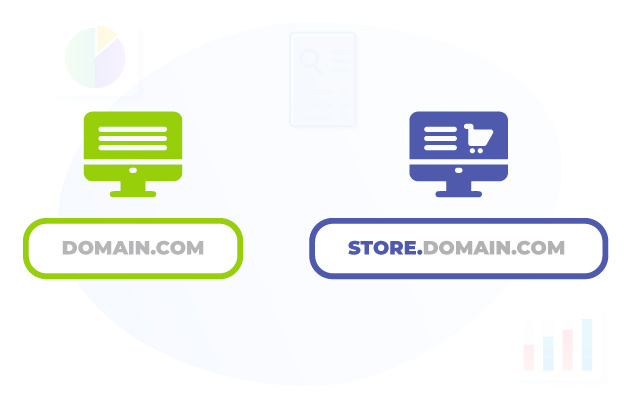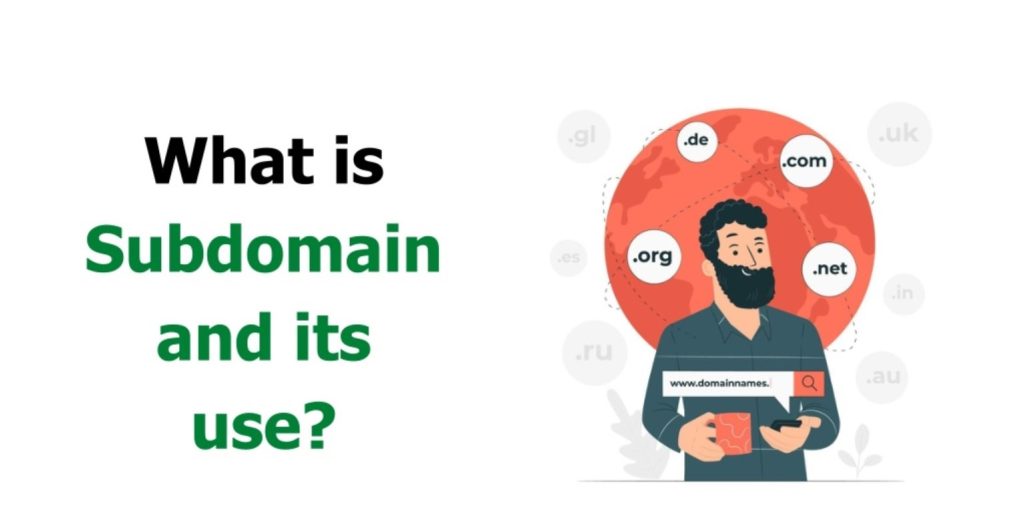A subdomain is a subset of a larger domain in the Domain Name System (DNS) hierarchy. It is created by adding a prefix to the main domain name. For example, in the domain name blog.example.com, example.com is the main domain, and blog is the subdomain.
Table of Contents
What is Subdomain?
A subdomain is a part of a larger domain within the Domain Name System (DNS) hierarchy. It functions as an extension of the main domain, allowing for the creation of distinct sections within a website. The subdomain is placed before the main domain name and separated by a dot.

Structure of a Subdomain
In the domain name blog.example.com:
- example.com is the main domain.
- blog is the subdomain.
Characteristics of Subdomains
- Hierarchy: Subdomains are hierarchically lower than the main domain. They are considered part of the same overall domain but serve specific purposes.
- Independence: Subdomains can be managed independently of the main domain. This means they can have separate settings, content, and even different hosting environments.
- Naming: There are no strict rules for naming subdomains, but they should be relevant to the content or function they represent. For example, shop.example.com for an online store, or support.example.com for customer support.
Uses of Subdomains
Organization of Content:
- Subdomains can be used to organize content within a website. For example, a company might use store.example.com for its online store and support.example.com for its customer support portal.
Localization:
- Subdomains are often used to serve localized content to different regions or languages, such as in.example.com for the India and fr.example.com for France.
Different Services:
- They can separate different services or sections of a website. For instance, mail.example.com might be used for email services, while shop.example.com could be used for e-commerce.

Testing and Development:
- Subdomains can be used for testing and development purposes. Developers might set up a subdomain like dev.example.com to test new features without affecting the main site.
Search Engine Optimization (SEO):
- In some cases, subdomains can be used to optimize search engine rankings by targeting different keywords or markets.
Branding:
- They can help in branding by creating memorable and specific URLs for different parts of a business or organization.
Enhanced Security:
- Using subdomains can improve security by isolating different parts of a website. For example, having secure.example.com for secure transactions.
Features of Subdomain
Subdomains offer a range of features that make them useful for organizing and managing different aspects of a website or web service. Here are some key features of subdomains:
Key Features of Subdomains
- Hierarchical Structure:
- Subdomains are part of a hierarchical DNS structure. They are created as extensions of the main domain, allowing for clear organization and segmentation.
- Independence:
- Subdomains can be managed independently of the main domain. They can have their own DNS settings, hosting environments, and security configurations.
- Customizable URLs:
- Subdomains allow for the creation of custom URLs that can be tailored to specific functions or sections of a website, such as blog.example.com or store.example.com.
- Security Isolation:
- Subdomains can enhance security by isolating sensitive parts of a website. For example, secure.example.com can be used for secure transactions and sensitive data handling.
- Load Balancing:
- By distributing traffic across different subdomains and servers, organizations can improve load balancing and overall performance of their web services.
- Search Engine Optimization (SEO):
- Subdomains can help improve SEO by allowing different parts of a website to target specific keywords and audiences, potentially boosting search engine rankings.
Examples of Subdomain Usage
- E-commerce: shop.example.com for an online store.
- Blog: blog.example.com for a company’s blog.
- Support: support.example.com for customer support resources.
- Localization: in.example.com for content tailored to Indian audience.
- APIs: api.example.com for providing API endpoints to developers.
- Development: dev.example.com for a development or staging environment.

